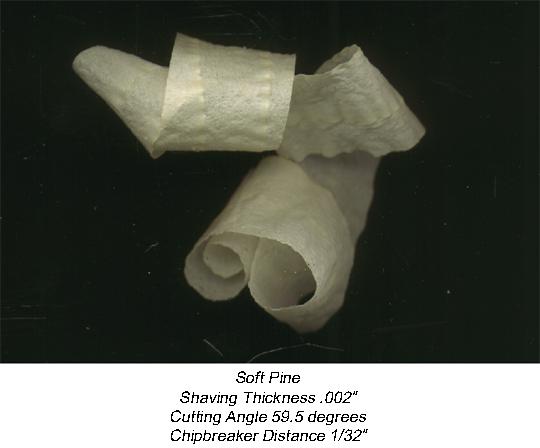|
|
|
To test the effect of a much higher cutting angle, I honed a 12º back bevel on a blade and used it in a plane with a bed angle of 47½º. On a difficult piece of Bolivian rosewood, it gave the best finish Iíve yet produced on that species. Despite the rows with alternating grain direction, there was no tear-out. Instead, the areas with adverse grain direction appeared dull when viewed from a low angle to check for surface reflection. The shavings from the rosewood fell apart when handled, and a large amount of dust was produced during planing. In short, there was not much worth scanning. I believe this was due to the brittleness of the rosewood. When the same blade, freshly honed, was used on soft pine, the shaving below was produced.
The characteristics of this shaving are not noticeably different from those taken using a much lower cutting angle. Iím beginning to think my attempt to produce different types of shaving should be done using a species other than pine.
|
|
[Home] [Summary of Results] [Testing Procedure] [Chipbreaking] [Cutting Angles] [Shaving Formation] [Tuning Infill Planes] [Links & References] [Contact] [Site Map] |
